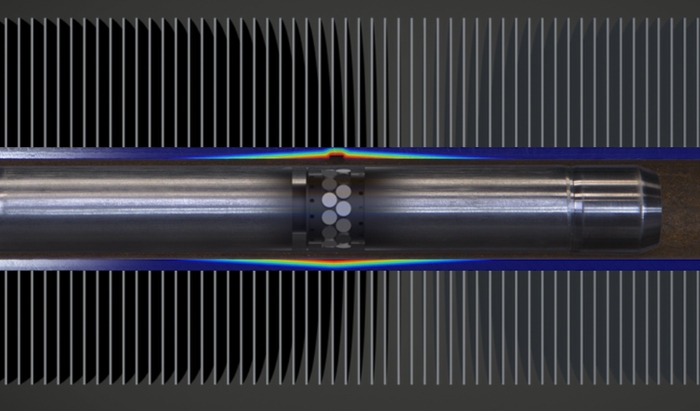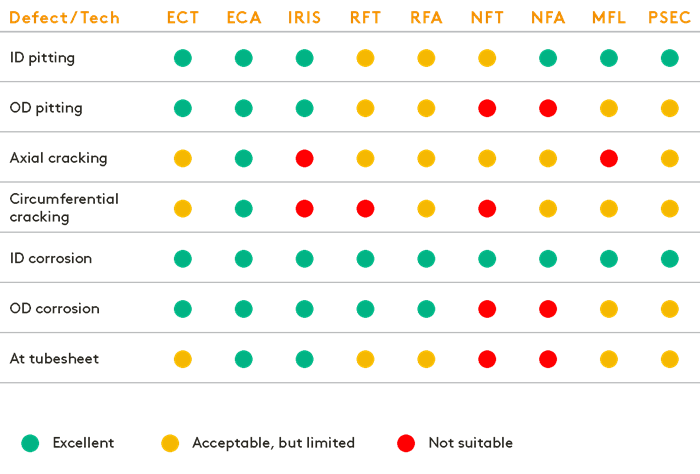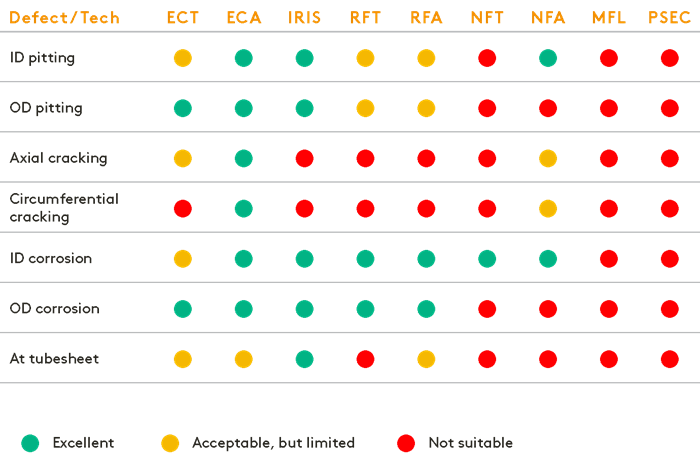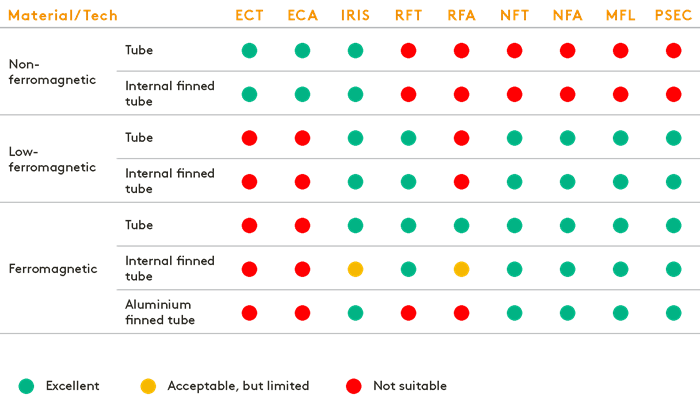Near-Field Array (NFA)
Near-Field Array (NFA) is the multiplexed evolution of Near-Field Testing (NFT). Thanks to its increased probability of detection, it is an excellent alternative to IRIS in fin-fan air coolers and ferromagnetic heat exchanger tubing.
Details
How it Works
By design, aluminum-finned carbon steel tubes are one of the most challenging tubular components to inspect. The external aluminum fins of these tubes greatly influence the quality of inspection signals making it difficult to size pitting, cracking at the tubesheet, tapering, and general wall loss in such tubes. Obviously, because the magnetic field of remote-field testing (RFT) propagates through and outside the tube wall, the technique cannot be used in aluminum-finned tubes. However, inspection companies use other techniques (NFT, MFL, Partial Saturation Eddy Current Testing (PSEC) or IRIS that do not have this limitation.
Ask an Expert
NFA technology functions in transmit-receive mode. A single bobbin coil acts as the transmitter to generate the near field, an absolute bobbin receiver coil detects and sizes the general internal wall loss, and up to two rows of multiplexed receiver coils cover the entire inner surface of aluminum-finned tubes (full 360°). With up to 30 optimized coils and thanks to channel multiplexing, NFA is capable of generating high-quality signals yielding a very good signal-to-noise ratio (SNR) that allow detecting circumferential and axial cracking. The coil configuration of NFA also enables C-scan imaging despite a scan speed equivalent to NFT at 300 mm/s (12 in/s) in tubes ranging from 19.1 mm to 38.1 mm (0.75–1.50 in) in diameter. So doing, NFA technology gives probes the necessary resolution to reliably detect small volumetric defects of approximately 3.2 mm (1/8 in) in a single pass.
Compared to other inspection technologies, Near-Field Array technology is easier to deploy. NFA does not incorporate any magnets, so probes are easy to push and pull through tubes, and are not as sensitive to pull speed as MFL probes. NFA probes also do not require water or complex tools, making them much easier to use than IRIS.
Benefits
- Inspect air cooler tube with a high-resolution array, providing intuitive C-scans at NFT speeds
- Detecting and sizing internal defects in one pass
- Detecting axial and circumferential cracks
- Easy to use (no magnet = easy to push and pull)
Detection Capabilities According to Defect Type

Sizing Capabilities According to Defect Type

Suitability According to Tubing Material
Learn more








